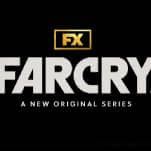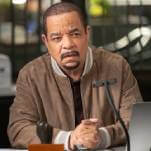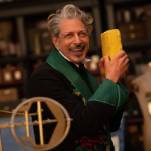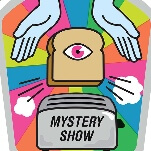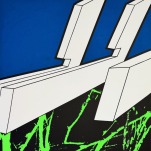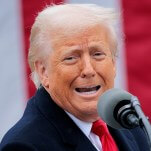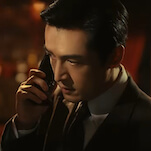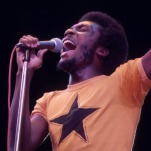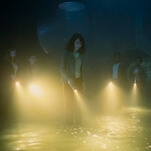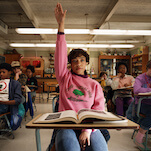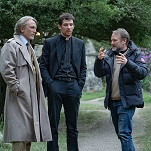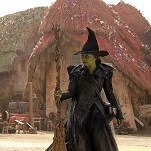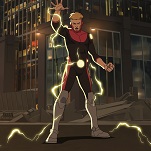In the year of Dirty Harry, an unlikely action phenomenon made hippies the heroes
Image: Photo: Silver Screen Collection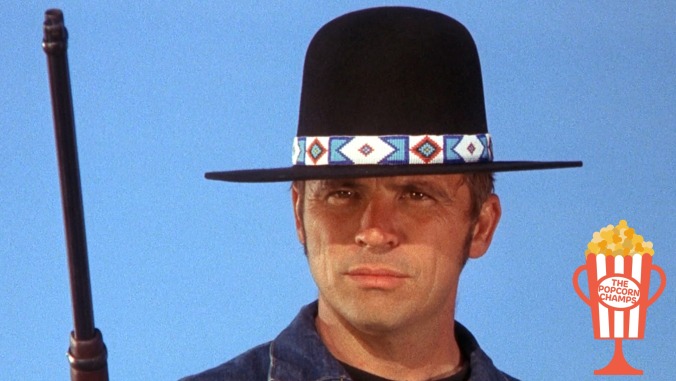

When he was getting ready to make Once Upon A Time… In Hollywood, his dizzy reimagining of 1969 Hollywood, Quentin Tarantino invited Brad Pitt over to talk about the role of Cliff Booth, a laconic stuntman with violent tendencies. When they were done talking about the character, Tarantino wanted to show Pitt his 35mm print of Billy Jack, the low-budget exploitation flick that unexpectedly became the highest-grossing film of 1971 and that served as a kind of inspiration for the Booth character. Pitt, it turned out, had brought over a DVD of the very same movie. (Tarantino told the story on the Pure Cinema podcast a couple of months ago.)
That’s a hell of a coincidence, but it makes sense. Tarantino and Pitt were both born in 1963. So they both would’ve been about 8 when Billy Jack first hit theaters, and they would’ve been about 10 when the movie became a full-blown cultural phenomenon. That means they would’ve been the exact right age for Tom Laughlin—the star, director, and co-writer behind Billy Jack—to make a huge impression.
Laughlin had played Billy Jack, the picture’s title character, as a leathery, hard-squinting outcast, a man permanently struggling with his own capacity for violence. Laughlin had used the character—“a war hero who hated the war,” as the Billy Jack opening narration helpfully tells us—to right historical wrongs. He was a quiet, reserved cowboy type almost mystically transported to Vietnam-era America. Decades later, Brad Pitt played Cliff Booth in much the same way, and Quentin Tarantino used the character to change the parts of history that he didn’t like.
But Tom Laughlin was not Brad Pitt, and Billy Jack is not Once Upon A Time… In Hollywood. Billy Jack is a B-movie with delusions of grandeur. It’s a cheap, sloppy, amateurish mess, full of stiff and wooden non-actors, ungainly pacing, half-assed storytelling, and self-righteous speechifying. Where Once Upon A Time… is the work of a master, Billy Jack is the work of a total nutjob with too much faith in his own ideas. Really, Billy Jack only barely even qualifies as a movie. And yet, the mere fact that this independent B-movie could outgross every big production of 1971 is a testament to Laughlin’s vision and the film’s timing. It spoke to people. It left an impression. And I really like it.
Billy Jack was a passion project for Laughlin. It took him years to make. Laughlin, a former college football player, had come out to Los Angeles to launch an acting career in the early ’50s, and he’d scored small roles in big movies like South Pacific and Gidget. He’d played the lead in Robert Altman’s 1957 debut, The Delinquents, though he and Altman hadn’t gotten along. Laughlin had also directed some low-budget independent pictures, like The Proper Time, that hadn’t exactly set the world on fire. For a while, he dropped out of Hollywood entirely; he and his wife, Delores Taylor, had founded a Montessori preschool in Santa Monica.
But Laughlin had ideas he wanted to get out. Years earlier, he’d started writing a script that had been intended to draw attention to the U.S. government’s foul treatment of Native Americans. Laughlin couldn’t get financing to make that movie. So instead, he found another way to use Billy Jack, the half-Cherokee warrior figure he’d imagined. Laughlin made him the hero of Born Losers, a biker-exploitation flick that he directed for Samuel Z. Arkoff’s grindhouse studio, American International. Laughlin, who had no Native American ancestry, starred in the movie. He’d never trained in martial arts either, but he played Billy Jack as an expert in hapkido karate.
Born Losers is a cheap and ridiculous piece of work. It also remains eminently watchable, mostly because of the self-serious gravity that Laughlin brings to a completely goofy character. And the movie did huge business, becoming the highest grossing film in American International’s history. Suddenly, Tom Laughlin had a franchise on his hands. He used his newfound clout to convince American International to finance the Born Losers sequel, Billy Jack, the passion project that Laughlin had wanted to make for so many years.
Even after he started filming in 1969, Laughlin did not have an easy time finishing Billy Jack. As Jesse Hawken writes in a great retrospective of the whole Billy Jack saga, Laughlin clashed with Arkoff, and American International killed the movie’s financing mid-production. So Laughlin took the movie to 20th Century Fox, and the studio paid for the rest of the movie. But Fox head Richard Zanuck hated its leftist politics, and he tried to get the film recut to take all of it out. After a whole bunch of fighting—including Laughlin threatening to destroy the picture’s sound elements—Fox sold the negatives to Laughlin.
At first, Laughlin got Warner Bros., the studio where he’d once been a contracted player, to distribute Billy Jack. But when Laughlin decided that Warner had bungled the release, he tried spearheading the distribution himself, renting out theaters one by one to show Billy Jack. That strategy—and the new visibility of anti-Native American discrimination after the Wounded Knee occupation of 1973—turned the film into a cultural phenomenon. It took the movie years to outgross 1971 blockbusters like Fiddler On The Roof and Diamonds Are Forever, but Billy Jack pulled it off.
Seen today, Billy Jack works as a fascinating anomaly: a ’70s action movie that wears its leftist politics on its sleeve, one that even spends time between ass-kickings paying lip service to the idea of pacifism. Billy Jack makes for a fascinating contrast with Dirty Harry, another 1971 hit with its own political ideas. In Dirty Harry, Clint Eastwood plays detective Harry Callahan as a rogue avenger on the side of law and order. He’s willing to defy regulations and orders if it’ll keep people safe. Meanwhile, his nemesis is a serial killer who calls himself Scorpio. As played by Andy Robinson, Scorpio is a gibbering, screeching funhouse-mirror exaggeration of the early-’70s hippie.
But Billy Jack, released the same year, frames its hippies as good guys, victims of racist small-town yokels. The hippies all come from the Freedom School, an alternative institution on a Native American reservation. The kids at the school—white, Black, Latinx, Native American—are all damaged and angelic. They’re all into songwriting and visual art and yoga and—in a few absolutely interminable sequences—guerrilla improv street theater. (There’s also a scene early on where one of the girls sings a folk song about how she’s in love with Billy Jack.) The local town’s sheriff is sympathetic, and he’s even patient enough to take part in one of those endless street-theater bits. But even the sheriff can’t protect the kids.
Billy Jack is structured as an action movie, but it really only has a few action scenes. Much of the movie is given over to philosophical debate. The teachers and students of the Freedom School try to win over the local townspeople, especially in a town council shout-fest that feels about 52 hours long. There’s also a vision quest scene where Billy Jack, bit multiple times by a rattlesnake, attempts to diagnose society’s ills: “The Indian tradition is now what the young people are looking for… The young whites, they know there is a supernatural world and a Great Spirit. Their religions no longer believe in the other world.” It’s all terribly sincere, and it’s all tough to watch, especially when the speeches are delivered by clear non-actors.
But when those action scenes finally arrive, Billy Jack comes to life. Those scenes are funny in their own right; we are, after all, talking about the spectacle of Tom Laughlin slapping a guy named Dinosaur through the window of an ice cream shop. But after we’ve been watching Native American kids relentlessly degraded, it’s truly exciting—in the same sort of lizard-brain way that Dirty Harry is exciting—to watch Billy Jack strike back.
After making Born Losers, Tom Laughlin really did study karate, and he got a hapkido master to choreograph the fights. So even though those throwdowns don’t have the same balletic grace as the wuxia movies coming out of Hong Kong in that era, they’re still pretty far beyond the standard Hollywood fare of the early ’70s. But Billy Jack carries himself more as a gunslinger than a martial artist. In its best moments, Billy Jack is a Western. The scene where Laughlin calmly takes off his boots and then takes on a whole mob of thugs is one of the most viscerally satisfying of its kind.
For the left-wing boomer kids of the early ’70s—the ones who were used to seeing themselves become caricatures in movies like Dirty Harry—it must’ve been cathartic to, just once, see a cheap action flick where the hero is fighting on their side. Billy Jack kicks off when the daughter of a local sheriff’s deputy comes home. She’s run away to Haight-Ashbury and gotten pregnant, and her father has beaten her badly, so Billy Jack has taken her to the Freedom School. It’s pretty clear right from the beginning: The hippie kids needs help and guidance, and the cops who abuse and fear them are the bad guys.
All through the movie, the various virtuous figures, including Billy Jack himself, preach nonviolence. Late in the movie, the local bigwig’s son ties up the Freedom School teacher, Jean Roberts, and rapes her. Jean—played by Delores Taylor, Tom Laughlin’s real-life wife—refuses to tell Billy Jack, and when he learns about it, she tries to keep him from going out and getting revenge. (She fails. Billy Jack kills the kid with a karate chop to the throat.) The movie’s politics aren’t especially coherent—it’s hard to make a strong case for peaceful resistance in an action movie—but they still stand as a powerful anomaly.
A few years after Billy Jack, Tom Laughlin would make his greatest impact on film history. In 1974, he made the three-hour sequel The Trial Of Billy Jack. As a movie, it’s even more violent, amateurish, and fervently political than its predecessor; it ends in a massacre that’s meant to evoke both Kent State and My Lai. Dealing with theater owners himself, Laughlin hatched a plan for a nationwide release date, opening The Trial wide at 1,200 theaters on the same day, something that had never been done. The Trial did huge business, becoming the third-highest grosser of 1974. A half year later, Universal released Jaws the same way, thus kicking off the blockbuster-film era.
Laughlin made one more sequel, 1977’s Billy Jack Goes To Washington—essentially a Mr. Smith Goes To Washington remake, produced by Frank Capra’s son, but with one fight scene. It was barely released. Another sequel was canceled when Laughlin sustained a head injury while filming. Laughlin was out of movies entirely by the end of the ’70s, planning Billy Jack sequels that never happened and mounting several quixotic outsider presidential campaigns. But in Billy Jack, he made his impact. The idea of a cool, deadpan ass-kicker who saves American history from asshole fascists had some staying power. Ask Tarantino.
The contender: 1971 was lousy with great movies, and many of those great movies—like The French Connection and Carnal Knowledge and The Last Picture Show—were also big hits. And then there was Stanley Kubrick’s bleak, stylish A Clockwork Orange, a truly fucked-up vision that has left a deeper dent in the popular consciousness than any movie of its era.
Kubrick made a glamorous, charismatic hero out of a demonic murderer and rapist, and he gave the movie a visual and linguistic style all its own. So A Clockwork Orange will always live on among teenage assholes (like teenage me) who find the whole spectacle unbearably cool. That’s not a great legacy. But A Clockwork Orange remains a stunning and audacious piece of craft, full of the sort of imagery that instantly sears its way into your brain. This X-rated, misanthropic nasty was so impressive—and it generated so much press and controversy—that it became a genuine hit and a Best Picture nominee, two things that are hard to imagine now. But in a time when Billy Jack could become a left-field blockbuster, maybe anything was possible.
Next time: The Godfather elevates the gangster flick into something operatic and universal.
GET A.V.CLUB RIGHT IN YOUR INBOX
Pop culture obsessives writing for the pop culture obsessed.


